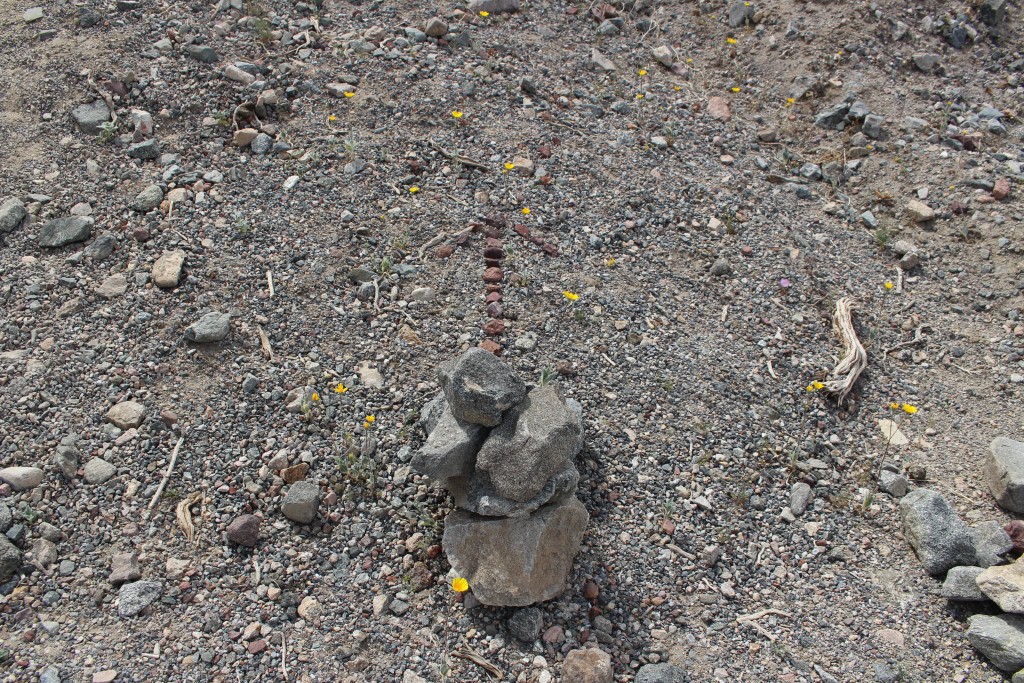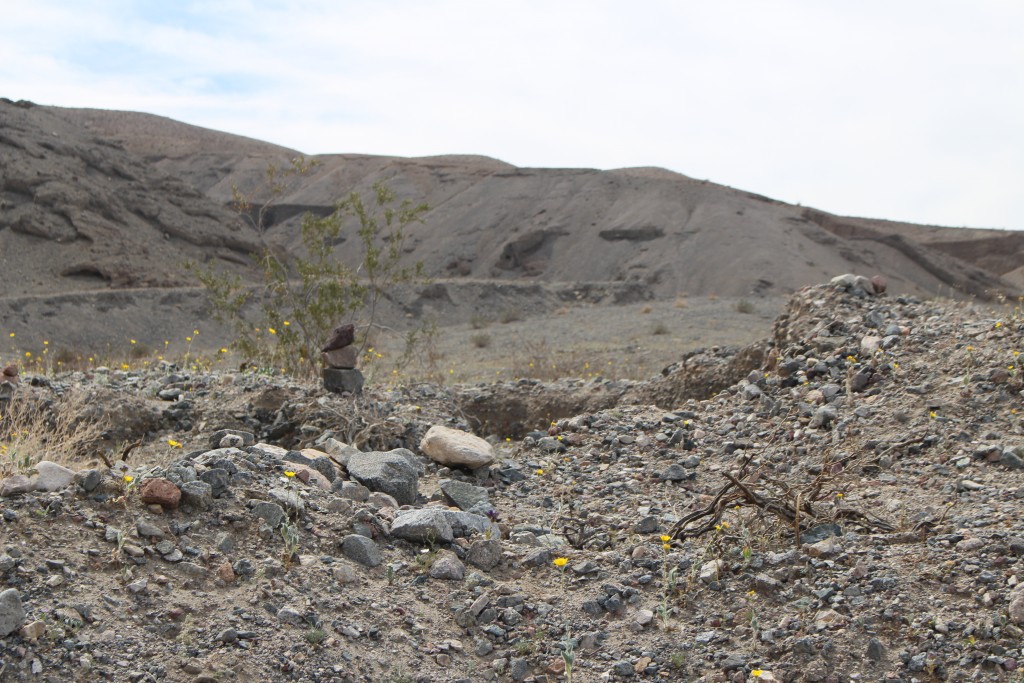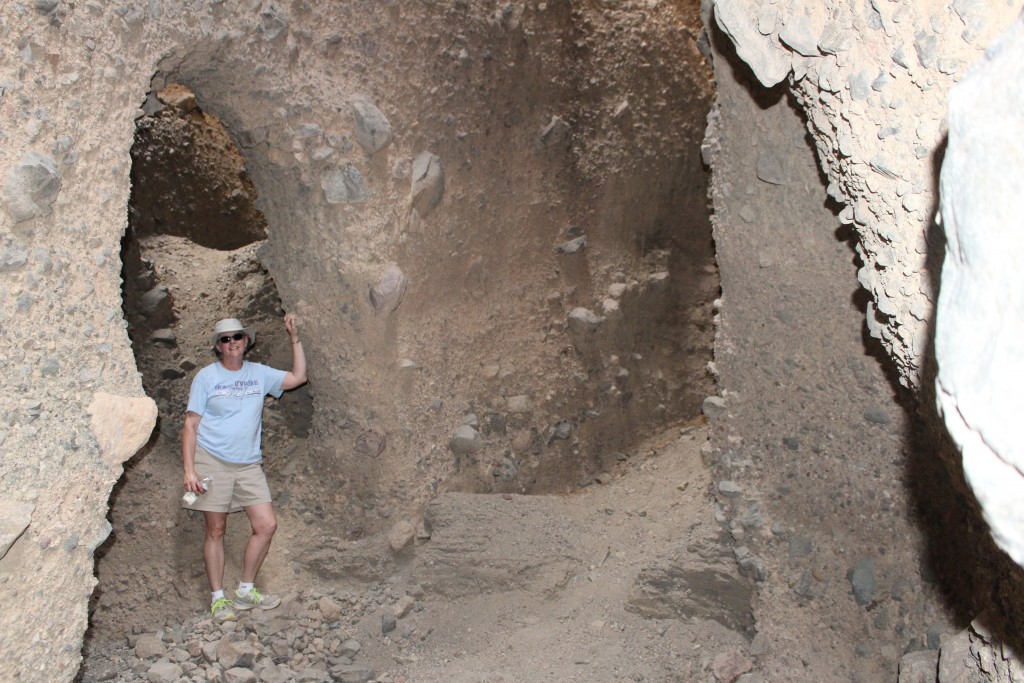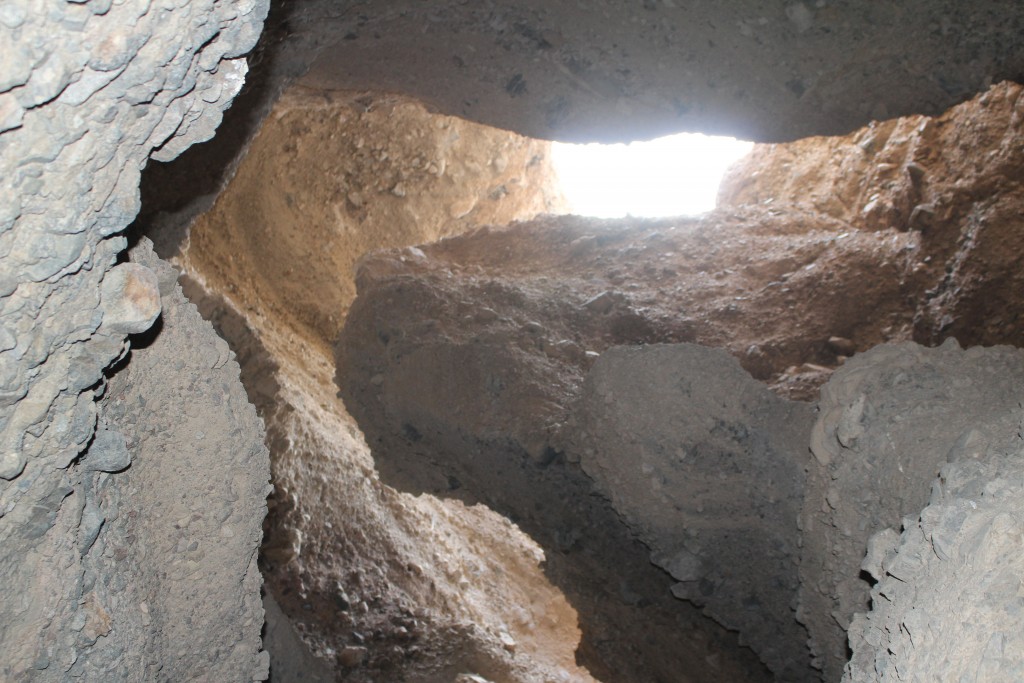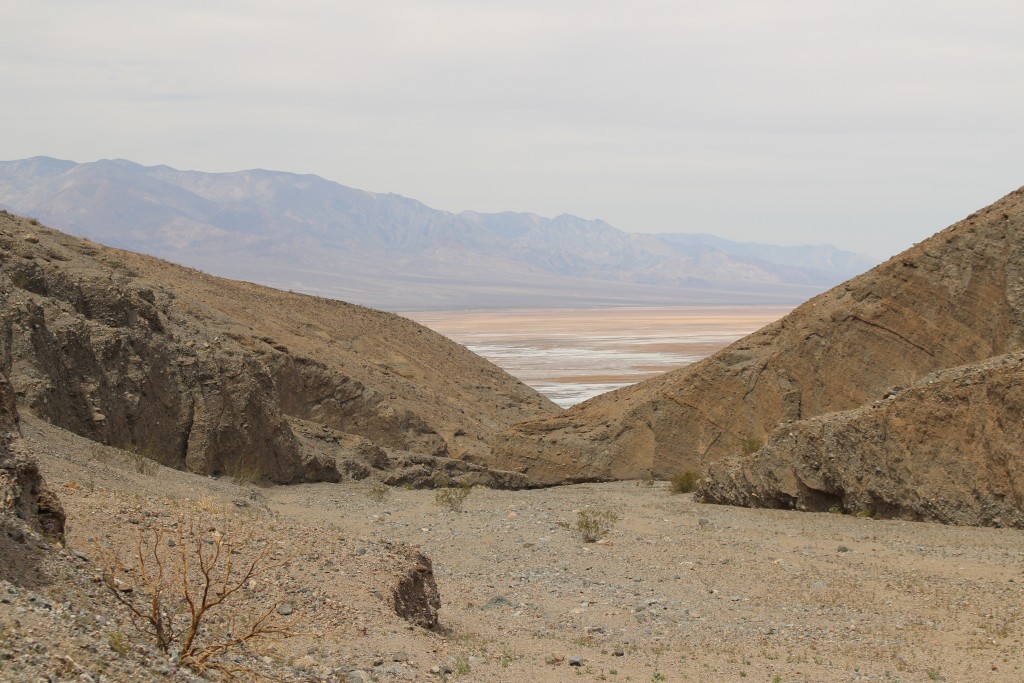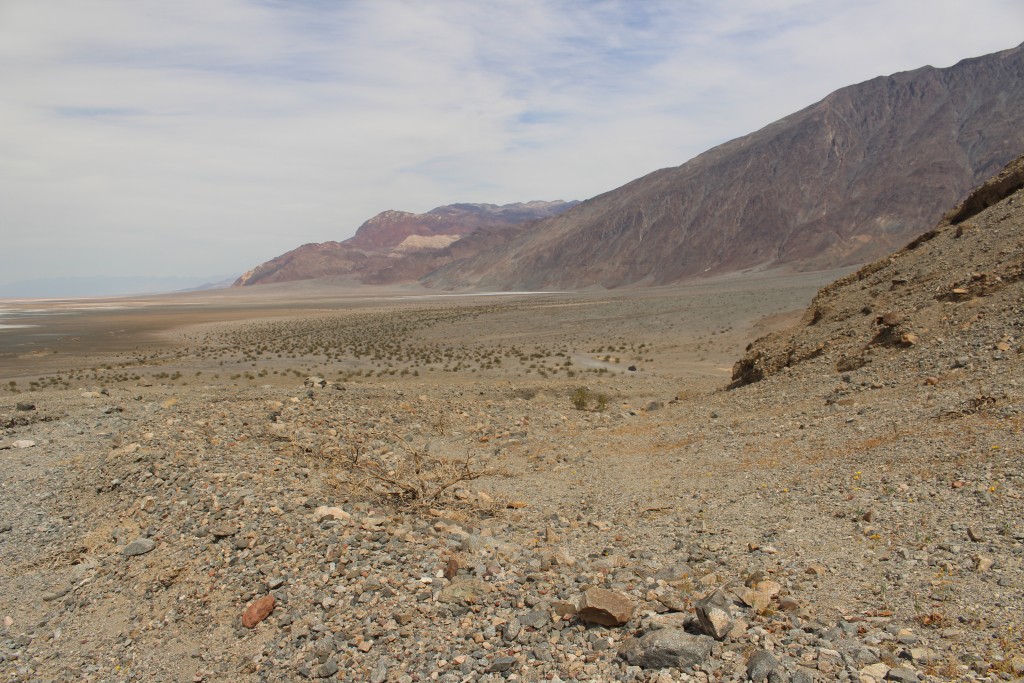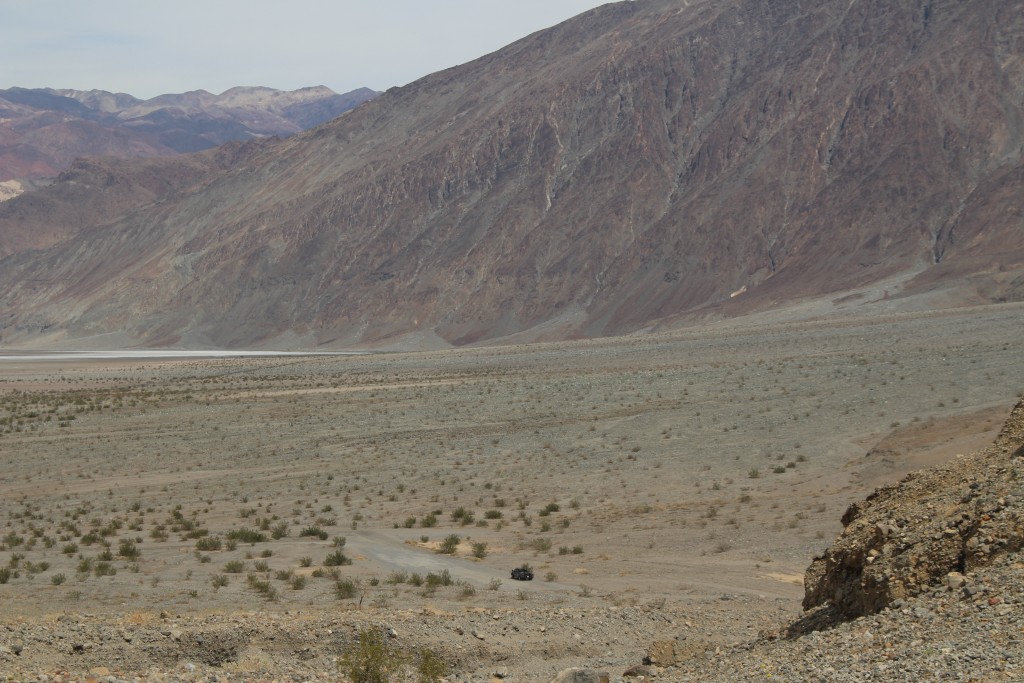Last week Tom and I hiked up a canyon that isn’t in any of our Death Valley hiking books: Sidewinder Canyon. Several people had recommended this hike and its companion Willow Creek Canyon. Both canyons are located in the southern part of Death Valley south of Badwater Basin and close to Mormon Point.
We drove to mile 31.5 and found the unmarked dirt road off to the left. After driving on that for just a few hundred yards, we came to a former gravel pit (Tom says everything here looks like a gravel pit so how can we tell?). According to the directions we were given, Sidewinder Canyon was to the right of the gravel pit and Willow Creek Canyon was to the left.
The hardest part of the hike was finding the right canyon. The instructions said to hike up the wash to the shallow canyon on the right. All the washes had run together and we could see three different shallow canyons. Which one was correct? We checked the topological map against the directions and decided to head for the farthest shallow canyon.
Just beyond the gravel pit we found an arrow made of rocks that pointed in the direction we were going. Just above it we could see a cairn and after that we followed the cairns to the mouth of Sidewinder Canyon.
Sidewinder Canyon is made of conglomerate rock, worn smooth in some places by the flash floods that come down Mt. Smith through the canyon. There are three slot canyons that branch off the main canyon. The last slot canyon was the most interesting as it got narrower and narrower until it ended in a rock fall that you could only climb up.
The canyon got its name because it winds from side to side as it goes up. The walls of the canyon get closer together until it almost feels like the canyon is turning over on itself as you climb. We also heard that it got its name because there are so many sidewinder rattlesnakes that live in the canyon, but we didn’t see any.
We hiked two miles into the canyon with a 900 foot elevation gain before we turned around to come back. Tom had been hoping to find a shortcut to Willow Creek Canyon, so that we could climb up and over, down into Willow Creek Canyon, and come back out down the canyon. He scrambled around for a while and probably could have done it, but it was more rock climbing than I can do. So we headed back to the mouth of the Sidewinder Canyon the way we had come in.
I am always amazed at how different the view going down a canyon is from the view going up. Going up I am focused on the next curve, the next turn, the next rock scramble up. Coming back down you can catch glimpses of the valley beyond the canyon and the mountains that surround everything. Going up I look at the particulars, the details. Coming down I see the bigger picture that always makes our climb seem insignificant in comparison.
The temperature in Sidewinder Canyon was 91, so I was hot and tired by the end of the four mile hike. We decided to save Willow Creek Canyon for another day. There are plenty of canyons to explore in Death Valley.

